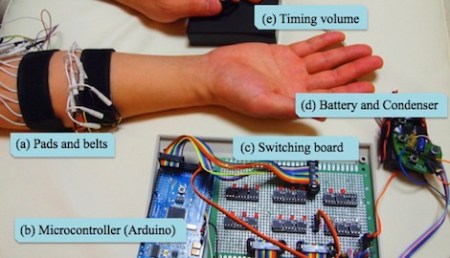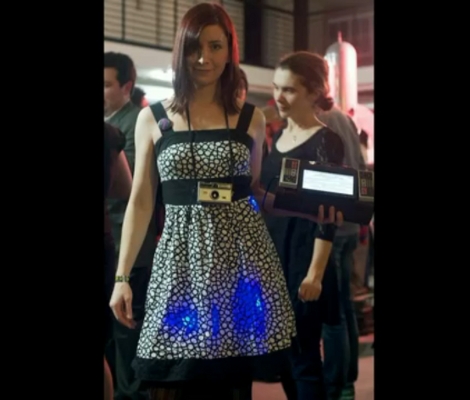
[Emi Tamaki], [Miyaki Takashi] and [Jun Rekimoto] at the University of Tokyo came up with a device called the PossessedHand that electrically stimulates muscles to train someone to play a the koto, a Japanese stringed instrument.
The PossessedHand ‘triggers’ individual fingers with precisely placed electrodes. Sixteen joints in the hand can be controlled independently by placing one electrode on the muscle that controls the joint and a ground electrode on the tendon of that muscle. Users of the PossessedHand reported no pain from the device when 30 Volts were sent though the electrodes.
The paper (PDF warning) goes into detail about the reactions of the users of the PossessedHand. While a few subjects thought the PossessedHand was scary, many enjoyed it – one subject even thought it was possible to fly a helicopter without training. While this isn’t downloading a rotary wing licence into your brain like The Matrix, the PossessedHand did prove to be a useful tool for learning the fingering for the koto. You can see a video of the PossessedHand in action in the New Scientist story.
[via New Scientist]
















